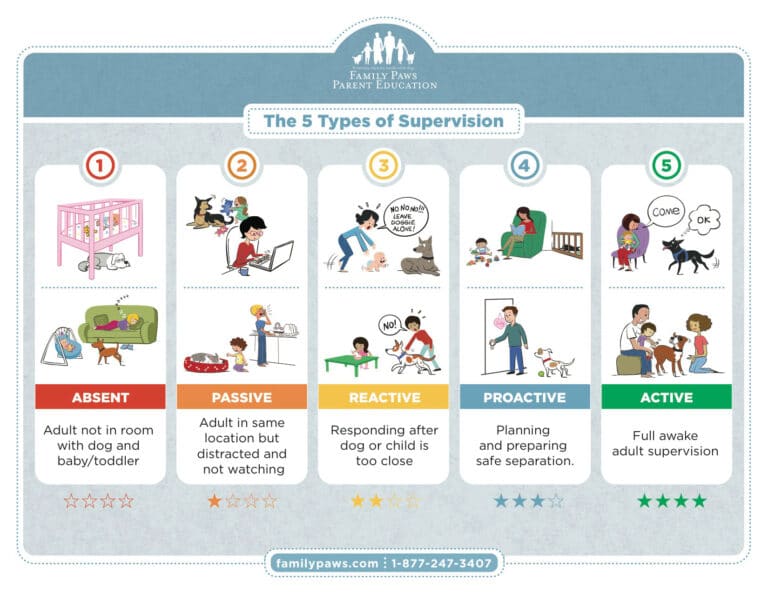Supervising Your Children Around Pets
The degree of supervision required, depends on many factors. Babies, toddlers, and any children who do not follow instructions require hands on supervision if they are to interact with the dog. Such interaction should always be on the dog’s terms without forcing the dog to submit. Any child that goes after a dog, pesters the dog, sits or lies on the dog, smothers the dog with hugs and kisses or is rough with the dog needs close supervision and to be removed from the dog (or the dog removed from them) when this behavior occurs (or preferably before it starts). Children that know to call the dog to them and to interact only with a dog that comes to them for attention, and who know how to interact respectfully with the dog, require less supervision the older they are. Dogs of unknown history or that have bitten or threatened children in the past should be kept away from children. This may be modified in consultation with a dog behavior consultant after a significant period of training. Supervision always involves paying close attention to the dog’s body language. If the dog does get to the point of biting, this will happen so fast that you will not be able to stop it no matter how close you are. You need to know the warning signs and intervene immediately to redirect the child to another activity. These signs include:
- Yawning
- Licking, tongue flicking out or licking his own nose
- Repeatedly licking the child
- Showing a half moon of white in his eye (that pleading look)
- Turning away
- Getting up and moving away
Read more on the topic of supervision from FamilyPaws.com and download the ASPCA Canine Body Language Brochure to learn more about how dogs communicate.
Click here for more pet safety tips for parents, dog owners and children.
